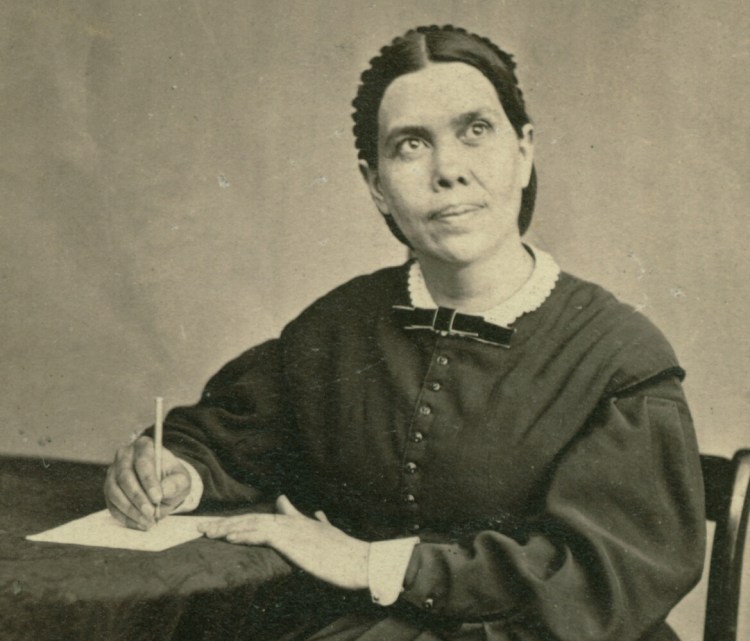July 16, 1915: Ellen Gould Harmon White, 88, a co-founder of the Seventh-day Adventist Church who was born in Gorham and raised in Portland, dies in California.

Raised in the Methodist church, she suffered permanent disfigurement at the age of 9 when another girl threw a stone at her face and broke her nose. White was knocked unconscious, and though her wound healed, she endured health problems throughout her childhood.
White and her family were swayed to the Adventist cause when they heard William Miller deliver lectures in 1840 in Portland about the expected second coming of Jesus Christ. In 1843, the Methodist church adopted a resolution condemning the Millerite views. White’s congregation expelled her family.
She suffered a further blow on Oct. 22, 1844, the day of the Great Disappointment, a day when the long-awaited second coming predicted by Miller didn’t occur. The letdown drove many people away from Miller’s teachings, but White said she had a vision from God that December in South Portland that convinced her she was on the right track. A second vision inspired her to go out in the cold of a Maine winter and visit Adventists up and down the coast to tell them what she had seen.
In 1846, she married James White. They met a Millerite movement follower named Joseph Bates who introduced them to the idea that the Sabbath, or holy day, should be observed on Saturday rather than on Sunday, in accordance with biblical tradition. They came to accept the idea, and Ellen White said she had a vision in 1847 that confirmed the belief.
The group adopted the name Seventh-day Adventists in 1860. White became a world traveler, writer and what Seventh-day Adventists today regard as a prophet.
Missionary work is a key component of Adventist faith. So is education, and White was instrumental in arranging for the establishment of Bible-centered schools, including medical training.
She also established Seventh-day Adventist churches in Europe and Australia and helped found the denominational headquarters in Washington, D.C.
July 16, 2004: Homemaking mogul Martha Stewart, a part-time Maine resident, is sentenced to five months in prison for lying about a stock sale.

Martha Stewart addresses her staff at Martha Stewart Living in March 2005 after being released from prison. Associated Press
She also is ordered to spend five months in home confinement after the prison term, fined $30,000 and allowed to remain free pending the result of an appeal. She pleaded not guilty to the charge.
Her stockbroker, Peter Bacanovic, who also was convicted of lying in connection with the Stewart case, receives the same prison and home confinement sentence.
Stewart then approaches a microphone outside the courthouse, denounces the insider-trading scandal and encourages her fans to buy her magazines and homemaking products.
When she was indicted, Stewart resigned as CEO of Martha Stewart Living Omnimedia. After her conviction, she quit her board seat in the organization.
Her court appeal notwithstanding, she later asks to be allowed to begin serving her prison term. She reports on Oct. 8 at a minimum-security federal penitentiary in West Virginia.
Asked in 2017 on NBC’s “Today” show about her prison time, she says, “It’s a horrible experience. Nothing is good about it, nothing.”
Stewart’s summer estate in Seal Harbor, on Maine’s Mount Desert Island, is featured in the July 2015 issue of Architectural Digest.
Presented by:

Joseph Owen is an author, retired newspaper editor and board member of the Kennebec Historical Society. Owen’s book, “This Day in Maine,” can be ordered at islandportpress.com. To get a signed copy use promo code signedbyjoe at checkout. Joe can be contacted at: jowen@mainetoday.com.
Send questions/comments to the editors.


